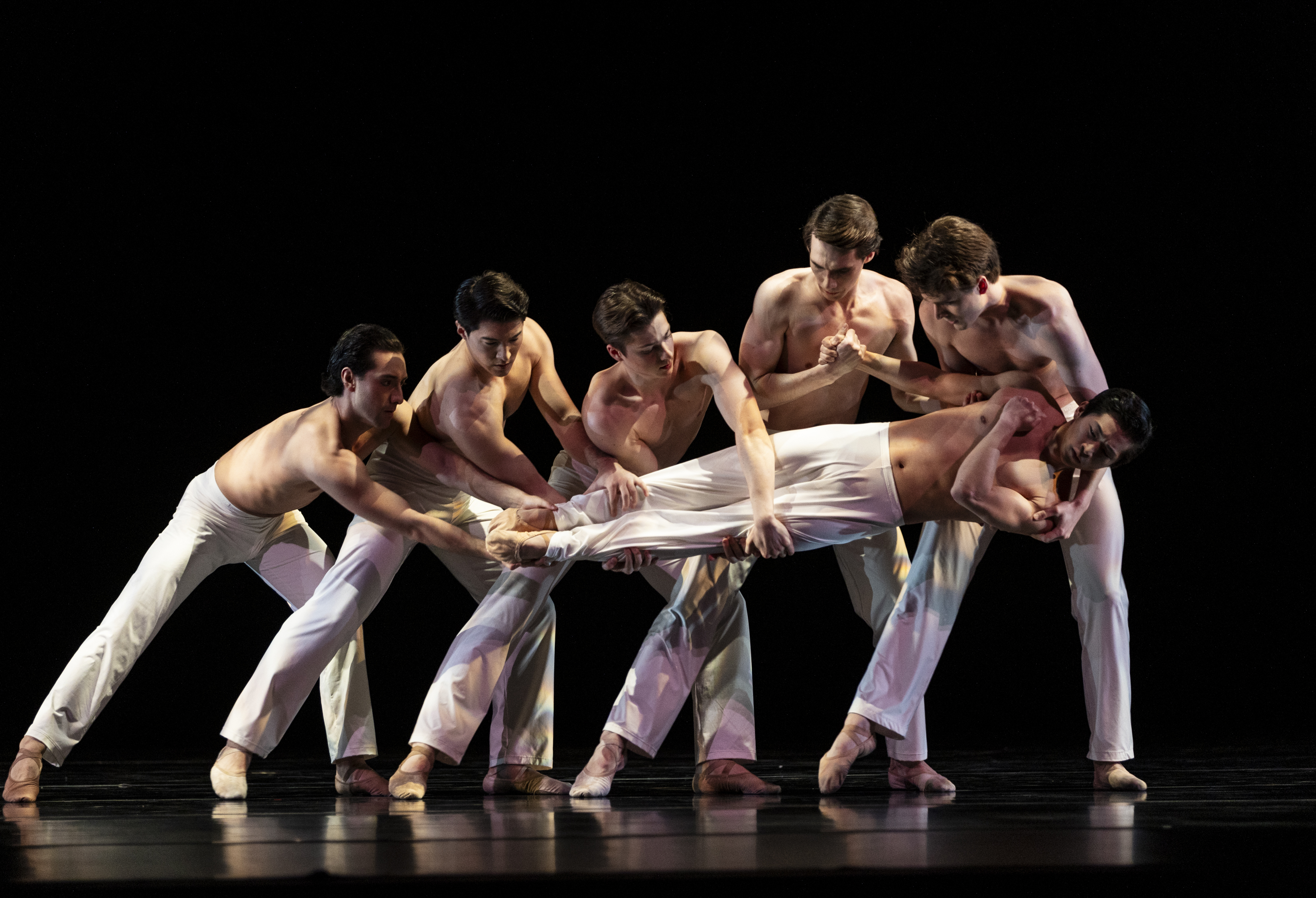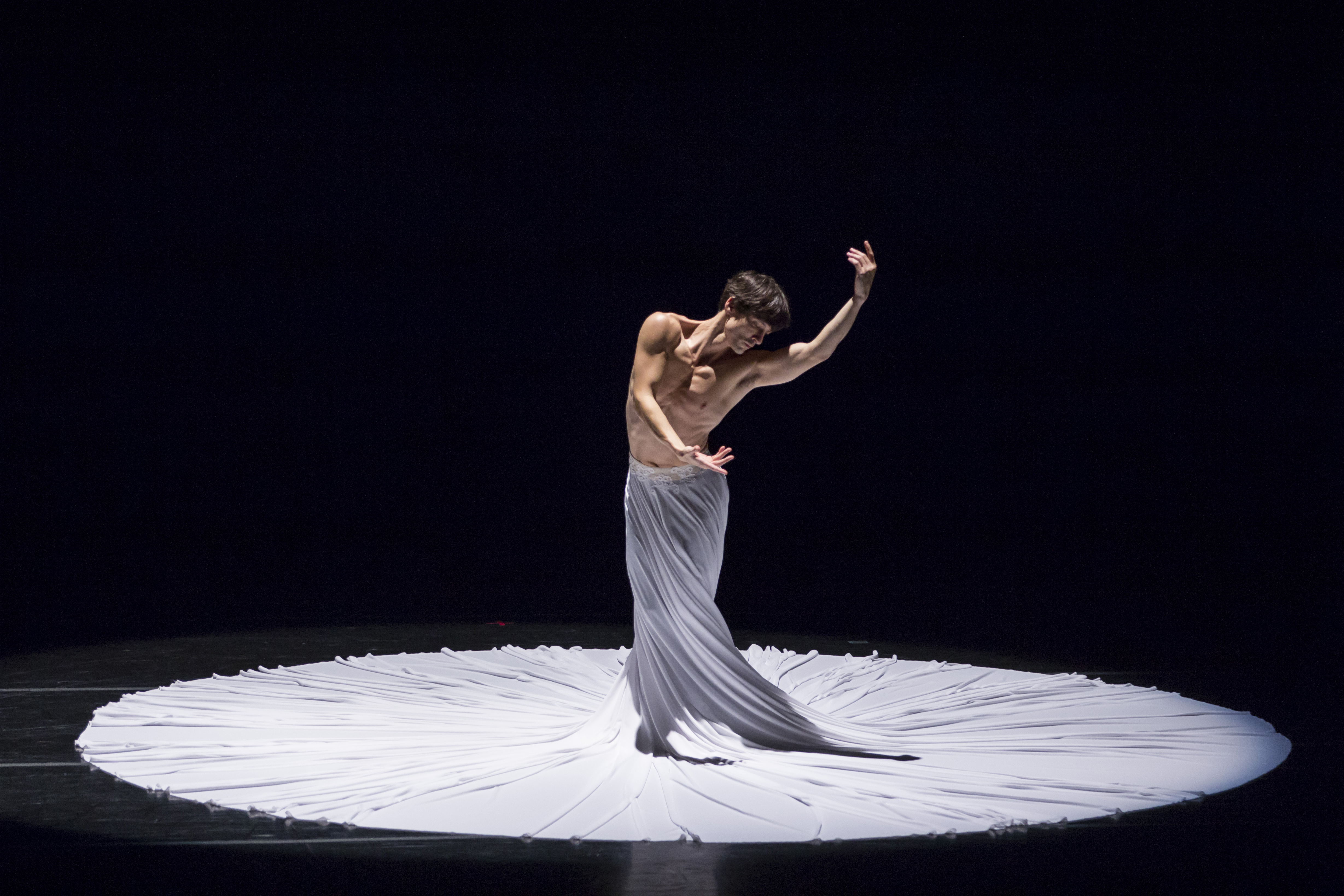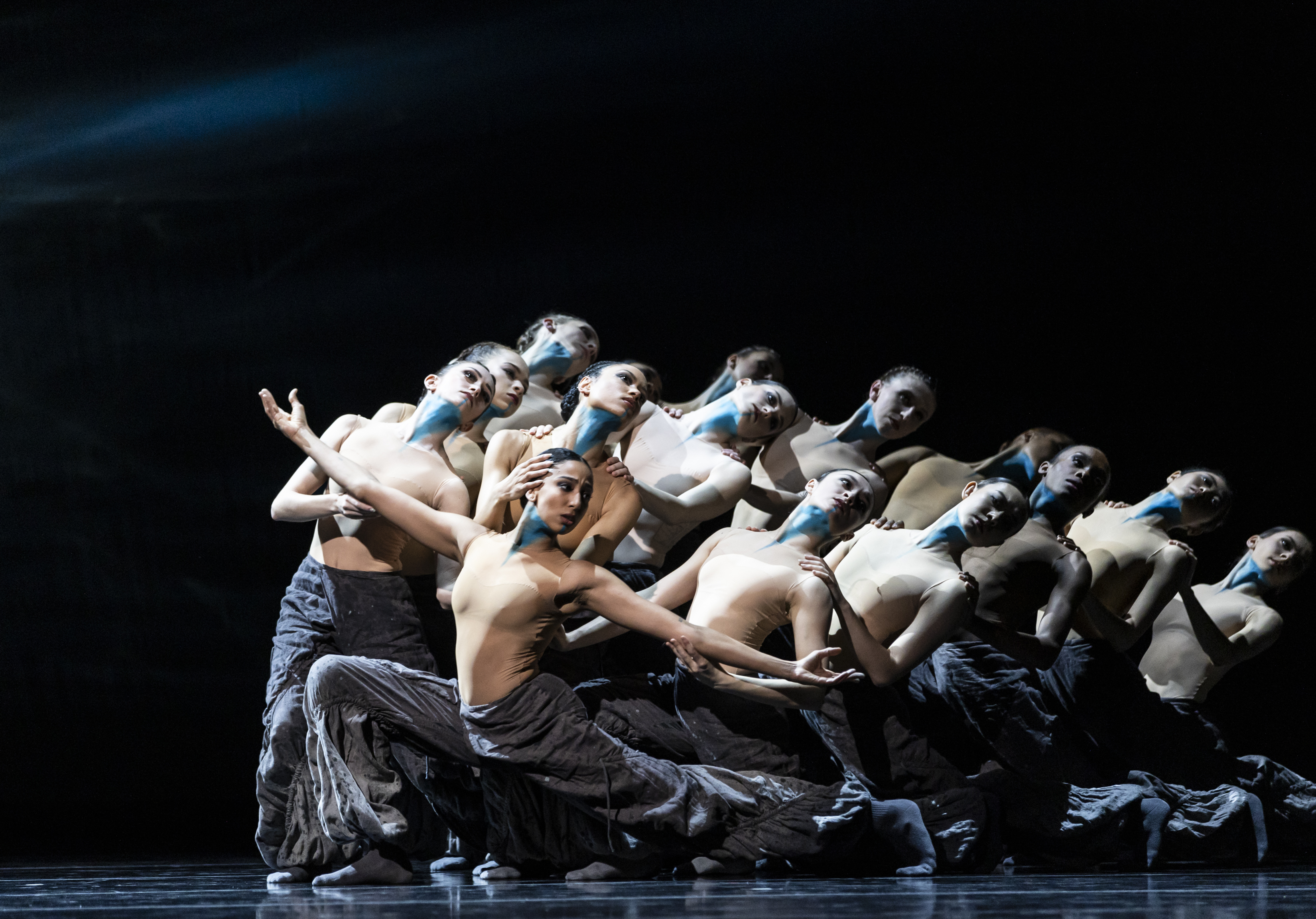The Dance Machine and Other Performances
Review of The Seasons' Canon at Pacific Northwest Ballet
Written by TeenTix Newsroom Writer Milo Milller and edited by Teen Editorial Staff Member Aamina Mughal

The first thing you hear at the Pacific Northwest Ballet’s performance of The Seasons' Canon at McCaw Hall, and the thing that sticks with you throughout the rest of the performance, is the sharp and dynamic choir that begins Twyla Tharp’s Sweet Fields, the first of three works. Constructed of eleven voices, the choir accompanies the ten-part operation with religious hymns from the 18th and 19th centuries. The songs are simple but elevated by crisp tenor voices, later joined by the winding sopranos and altos.

Due to the power and excellence of the music, the linked dances sometimes feel like they accompany the score, instead of the other way around. The choreography is creative, switching between blue-toned, lighthearted vignettes and brooding, funeral-march-inspired processions. Visually, most of the dances work quite well. Tharp’s fast-paced, complex actions are sometimes lost in their technicalities, but the overall, folksy theme and the duality of celebration and death make for a series of enticing pairings.
For all the thematic cohesion of the piece, the coordination between music and movements is all over the place. Sometimes, their connection is as basic as the male dancers leaping on stage, while the male tenors take over the music from the sopranos. Other times, it seems to go no further than a general statement of tone. Often, the dancers find themselves led astray by music that doesn’t fit with their moves, such as a specific moment when the unmatched music ends, leaving the dancers to continue their choreography for upwards of ten seconds soundless before leaving the stage. It doesn’t seem like a lot, but when watching in person, it is an uncomfortable silence—even if it is supposed to be an intentional choice.
Despite this small dissonance, the performance is lively (and, sometimes, deathly) and effective in its use of movement. Tharp uses shapes and lines to her advantage as she brilliantly sprinkles motifs across the varied performance. Sweet Fields is the perfect way to begin The Seasons' Canon; without the forceful, spirited voices of the choir bringing the audience into the ballet, the rest of the performances would not have the power or potency they do.

After a short pause, Jessica Lang’s well-choreographed The Calling ensues. Soloist James Yoichi Moore blends the fluidity of nature with robotic moves expertly and controls his billowing dress. The dress frames Moore like a man emerging from the ground with an ethereal presence, a role Moore easily inhabits as he fills his four minutes with grace. The dress, designed by Elena Comendador from Lang’s concept, is both an extension of Moore and a connection between him and the stage. The tradeoff between having the actor’s whole body visible and including the unique dress feature is a tricky one, but the creatives involved pull it off very well. The accompanying music is simple but effortlessly effective as a compliment to the dance. It features a dance by Yoichi Mooreto a rendition of “O Maria, stella maris,” a 12th-century French song, which commands the performance without the raucousness that could have come with the role. Instead, Moore’s performance is graceful and respectful, though the music is at times, a meandering weight on the performance, the soloist’s voice provides a generous backing to allow Moore to perform to his fullest.
An intermission comes after The Calling, followed by the expertly-choreographed, 54-dancer behemoth called The Seasons' Canon. This performance’s ensemble is the most skilled of the night; even more coordinated and better executed than Sweet Fields, with even more to work with than The Calling, The Seasons' Canon is the performance’s highlight. With a clear theme and comprehensible dancing, the choreography lends itself more easily to the different elements of the dance, both fluid and mechanical. When the dancers move as one body, they achieve such a feat perfectly, conjuring the image of a tree with a hundred branches and leaves that fall periodically, or a giant moving body of insects skittering across the stage. When the ensemble attempts to move as individuals, they create a massive storm effect, to emulate the beginning of autumn.

While the dancers move, coming together in one large operation, Max Richter’s recomposition of Vivaldi’s Four Seasons piece accompanies. Richter’s work takes the essence and themes of Vivaldi’s work and composites them into a sequence accessible and ready to latch onto the coexisting dance movement. The music is unenergetic and neither here nor there. When it becomes boring, the dancers steal the audience’s interest; in the few moments when there is a beat in the dance, the music fills the space adequately well, but no more. Furthermore, backing the dancers is a projected light screen. This screen fumbles through the performance, providing unclear and unnecessary support to the dance. The screen seems not to understand the movement of the piece, and because of that its generic yellow starlight-themed imagery is unfitting with the rest of the show. But those who focus on the screen behind the dancers miss the point of the dance—the symphonies performed by the dancers distract from any misgivings over the set. Their refined movements reflect expert skill, bringing remarkable life to the seasons and creating a unique on-stage environment.
Bringing their one-of-a-kind choreography to its fullest through slick movement, the dancers of The Seasons' Canon end the night on an entertaining high note, bringing to a close the evening full of creativity in The Calling and astounding music in Sweet Fields. Together, the sum of the three is more than its parts, as their consecutive flow feels more like a trilogy of motion rather than three pieces strung together. Through music and dance, visual and auditory delights, the Pacific Northwest Ballet strikes again with another near-perfect performance.
Lead Photo: Pacific Northwest Ballet company dancers in Crystal Pite’s The Seasons’ Canon. Photo © Angela Sterling, 2024.
The TeenTix Newsroom is a group of teen writers led by the Teen Editorial Staff. For each review, Newsroom writers work individually with a teen editor to polish their writing for publication. The Teen Editorial Staff is made up of 5 teens who curate the review portion of the TeenTix blog. More information about the Teen Editorial Staff can be found HERE.
The TeenTix Press Corps promotes critical thinking, communication, and information literacy through criticism and journalism practice for teens. For more information about the Press Corps program see HERE.

